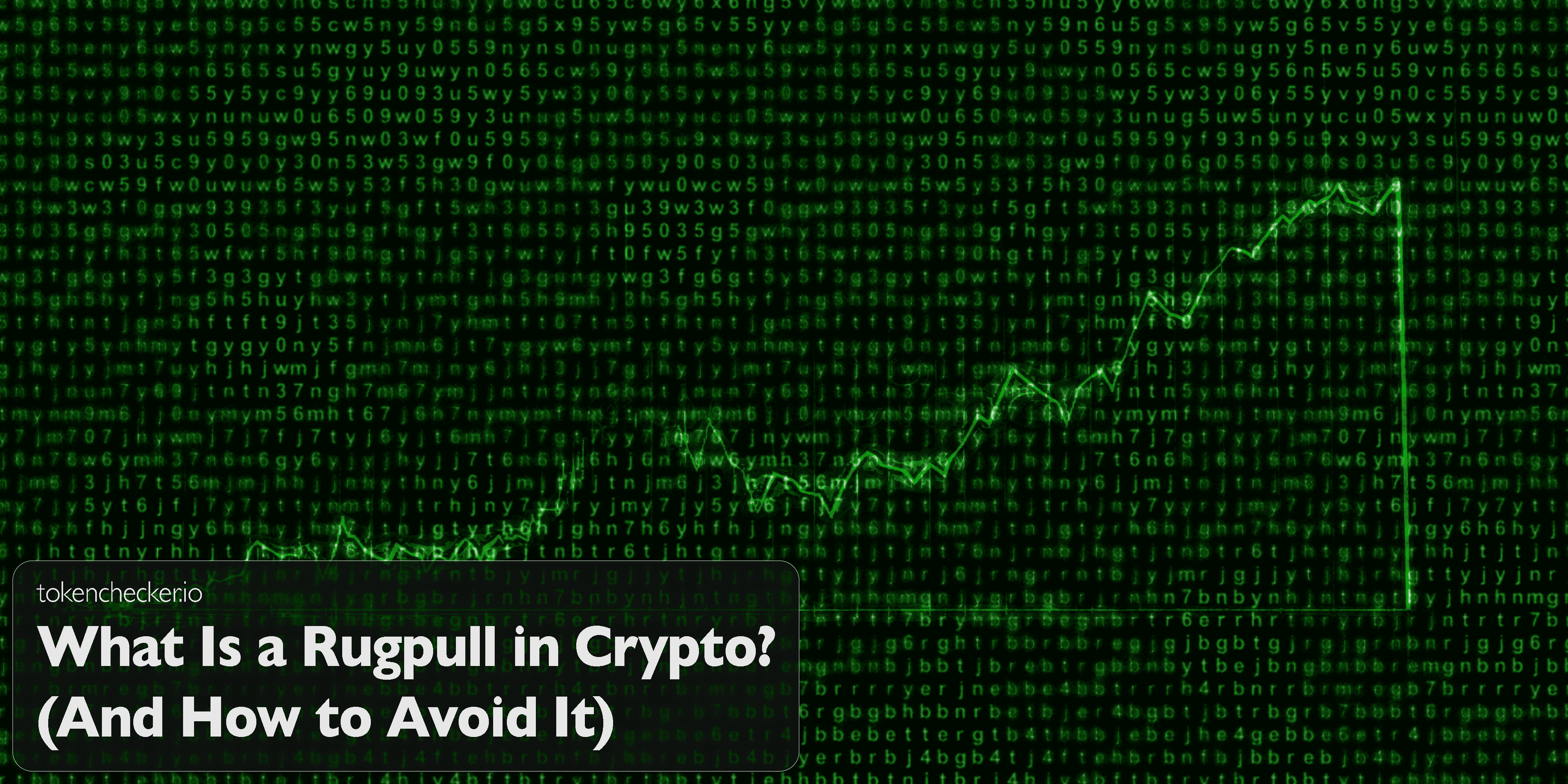
What Is a Rugpull in Crypto? (And How to Avoid It)
Introduction
A rugpull is one of the most destructive scams in crypto. It is fast, calculated, and often designed to bypass traditional detection methods. While many associate rugpulls with liquidity being drained from a DEX, the scam has evolved into multiple sophisticated forms.
This guide explains what a rugpull really is, the various types that exist today, and how to identify them using behavioral clues, smart contract logic, and forensic on-chain analysis. tokenchecker.io incorporates all of these layers into its detection engine.
1. Liquidity Pull
The developer adds liquidity to a DEX, builds hype, then removes the liquidity pool, collapsing the market. This is the most recognizable form of rugpull.
What to check:- Is the LP locked?
- Is the LP lock using a trusted locker like Unicrypt?
- How long is the LP lock duration?
tokenchecker.io shows LP lock status, lock length, and who controls the LP tokens.
2. Honeypot Rug
Buyers can purchase tokens but are unable to sell. The smart contract includes logic that silently blocks sell transactions or charges extreme fees upon transfer.
Typical signs:- Sell attempts fail with no clear reason
- Only select wallets can sell
- Sell function depends on gas or timing conditions
tokenchecker.io uses simulated trades to detect these mechanics before you interact with the token.
3. Soft Rug
Instead of an immediate exit, the project drains value gradually. The team might dump tokens over time, halt development, and quietly remove incentives without warning. Liquidity may be slowly pulled to avoid detection.
What to check:- Are team wallets still active?
- Is LP unlock activity occurring in small increments?
- Is volume declining while marketing continues?
Soft rugpulls rely on investor fatigue and attention decay. tokenchecker.io’s real-time LP and wallet tracking helps flag this behavior.
4. Insider Dump
A fair launch is promised, but insiders or bots accumulate large amounts of tokens before the public has access. These wallets then dump as price rises, draining liquidity and destroying token value.
Warning signs:- Wallets buying in the first block after deploy
- Multiple large buys from the same IP or funding source
- Immediate post-launch selloffs
Why Rugpulls Are So Effective Today
Modern scams use layers of deception:
- AI-generated whitepapers and websites
- Fake audits and unverifiable certificates
- Proxy contracts that can be upgraded post-launch
- Social bots to inflate follower counts and simulate interest
Some scam networks deploy dozens of identical tokens using the same backend code, rotating brands weekly.
tokenchecker.io identifies recycled contract logic and mismatches between frontend claims and actual smart contract behavior.
How to Detect a Rugpull Before It Happens
1. Check Contract Ownership and Functions
Look for:
- Renounced ownership or active upgrade rights
- Custom transfer or tax logic
- Functions that allow minting, blacklisting, or blocking transfers
2. Analyze Liquidity
- Is liquidity locked for a meaningful period?
- Who owns the LP tokens?
- Is the token paired with ETH or with a wrapped or low-value asset?
Tokens with fake liquidity often pair against low-volume assets and use disposable lockers.
3. Inspect Wallet Distribution
- Are deployer-linked wallets holding large amounts?
- Are team wallets selling into early pumps?
- Is there a cluster of wallets seeded from the same source?
tokenchecker.io uses clustering to link related wallets even when obfuscated.
4. Monitor Launch Behavior
- Does volume spike with little holder growth?
- Are there sniper bots in the first few blocks?
- Does the price jump before LP is even verified?
These behaviors often reveal premeditated scams masked as fair launches.
Final Thoughts
Rugpulls have evolved. It’s no longer enough to read a whitepaper or look at price action. You need real-time, on-chain intelligence. That includes liquidity visibility, contract logic, holder tracing, and behavioral simulation.
tokenchecker.io offers that visibility in seconds. By integrating behavioral flags and contract pattern recognition, it detects the red flags most traders miss.
A rugpull is not always obvious, but the blockchain always leaves a trail.